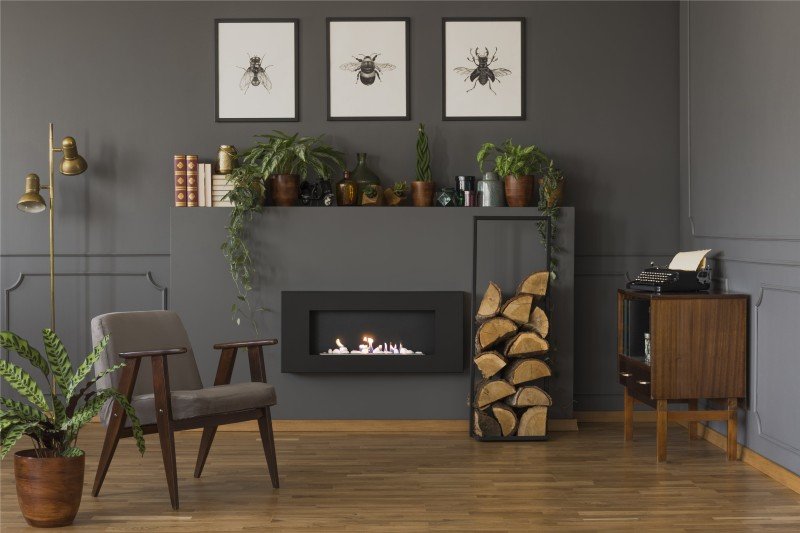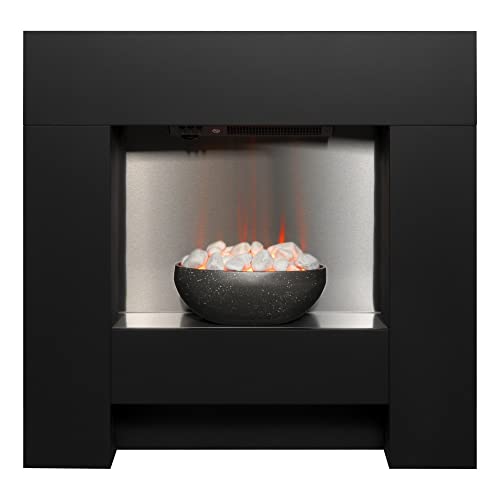fireplace-near-me6749
fireplace-near-me6749
Guide To Small Fireplaces: The Intermediate Guide To Small Fireplaces
A Comprehensive Guide to Small Fireplaces: Efficient Heating and Cozy Living
In an era where energy effectiveness and space optimization are ending up being significantly crucial, small fireplaces have emerged as an appealing option to traditional, large hearths. These compact heating solutions offer warmth and a focal point for any room, increasing both convenience and visual appeal. This article explores the different kinds of small fireplaces, their advantages, setup factors to consider, and upkeep tips, eventually helping homeowners make notified decisions when thinking about these charming heating alternatives.
Understanding Small Fireplaces
Small fireplaces use a range of styles, including electric, gas, ethanol, and wood-burning designs. Each type presents distinct advantages and style possibilities, making them ideal for various living areas.

Kinds Of Small Fireplaces
| Fireplace Type | Description | Pros | Cons |
|---|---|---|---|
| Electric | Uses electricity to create heat. Provides lots of designs, including wall-mounted and freestanding systems. | – Easy to set up – Low maintenance – No venting needed |
– Limited heat output – May incur greater electrical energy expenses |
| Gas | Burns gas or gas. Frequently available as logs in a traditional fireplace or modern designs. | – Efficient heat output – Cleaner than wood – Easy ignition |
– Requires gas line setup – Some units need venting |
| Ethanol | Burns bioethanol, providing real flames without a chimney. | – Eco-friendly – Portable – No setup needed |
– Limited heat output – Higher fuel costs |
| Wood-Burning | Traditional fireplaces that burn firewood. Often utilized in more rustic settings. | – Great heat output – Rich atmosphere – Can be used throughout power blackouts |
– Requires a chimney – Regular maintenance and cleaning |
Advantages of Small Fireplaces
- Space Efficiency: Small fireplaces are ideal for apartments, condos, and smaller homes. They take full advantage of heat without taking up excessive flooring area.
- Cost-efficient Heating: In specific cases, small fireplaces can supplement central heating unit, decreasing total energy expenses while creating a more comfortable environment.
- Atmosphere and Aesthetics: They supply an inviting focal point to a space, producing a cozy environment perfect for relaxation and social events.
- Flexibility: Available in numerous styles and styles, small fireplaces can complement any decor, from modern minimalist to rustic traditional.
Installation Considerations
When considering a small fireplace, setup is an essential element that can affect the choice of design. Below are handy factors to consider:
- Local Regulations: Building codes can vary by place; constantly inspect regional standards before setup.
- Ventilation Needs: Depending on the type, small fireplaces might require various ventilation systems. Gas fireplaces may need venting outdoors, while electric designs do not.
- Power Source: Electric designs need distance to electric outlets, while gas and ethanol models might need a gas line or fuel storage.
- Weight and Structure: Installing wall-mounted systems might need strengthened wall areas, whereas free-standing models are simpler to transfer.
Upkeep Tips
Like any other home device, small fireplaces need routine upkeep to operate efficiently and safely. Here are important upkeep suggestions for numerous fireplace types:
For Electric Fireplaces:
- Cleaning: Wipe down the system with a soft cloth to remove dust and keep the heater ducts clear.
- Examination: Check the power cord routinely for any damages or indications of wear.
For Gas Fireplaces:
- Annual Inspections: Schedule yearly assessments by an expert to make sure safe gas circulation.
- Tidy the Logs: Regularly clean the burner and logs to maintain optimal efficiency.
For Ethanol Fireplaces:
- Fuel Storage: Store ethanol fuel securely away from direct sunshine and heat sources.
- Routine Cleaning: Clean the burner after each use to maintain performance and prevent soot accumulation.
For Wood-Burning Fireplaces:
- Chimney Sweeping: Have the chimney professionally cleaned up once a year to avoid creosote buildup.
- Firewood Storage: Only use dry, seasoned wood to reduce smoke and promote effective burning.
Frequently Asked Questions
1. Can I set up a small fireplace myself?
While some electric and ethanol fireplaces are fairly easy to set up, it is recommended to hire a professional for gas and wood-burning systems to ensure compliance with regional building codes.
2. How much does it cost to run a small fireplace?
The expense will vary depending on the kind of fireplace. Normally, electric fireplaces might sustain greater electrical energy expenses, while wood-burning options can draw from eco-friendly firewood supplies.
3. Do I need a permit for setup?
Permits are usually needed for gas and wood-burning fireplaces due to their installation complexity and security guidelines. Always consult regional authorities.
4. How long can I run an electric fireplace?
A lot of electric fireplaces can run for extended periods; however, it’s suggested to follow producer standards to prevent getting too hot or harming the system.

5. What type of small fireplace is best for a small area?
This mainly depends upon individual requirements. Electric designs are flexible and simple to install, while gas and ethanol choices offer genuine flames with efficient heat output.
Small fireplaces represent a functional and trendy option for those looking for effective heating solutions in compact home. With different types available, property owners can select models that line up with their visual preferences and space requirements. By comprehending the installation processes and regular maintenance needed, people can take pleasure in the convenience and ambiance that small fireplaces use for many years to come. Whether for a cozy night at home or an inviting area for gatherings, small fireplaces are an enduring aspect of modern and traditional decoration alike.


